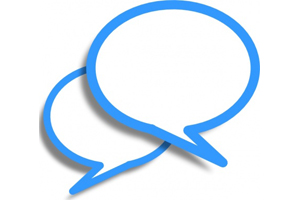Today’s Internet companies put the Dis into service.
Technology is a weapon that must be used responsibly otherwise everyone gets hurt.
For example, marketing minions at all today’s service providers– be they banks, mobile operators or ISPs – use the scattergun feature remorselessly. As a result, greater portions of our lives are wasted dealing with official looking letters about ‘important changes to your account’ and upsells thinly disguised as ‘deals’. The only thing that stops you switching is the knoweldge that their rivals are just as bad.
Service provision – in my experience – isn’t about companies giving you what you want. It’s about companies giving you what they want you to have. Most organisations seems oblivious to what the consumer actually wants. The recent elections in the UK provide that. The pollsters and the social media analysts got their predictions completely wrong, which make me suspect that their big data analytical tools are not quite as insightful as they keep telling us. Meanwhile, the bookmakers, who rely more on human judgement, got much nearer the truth.
In any industry where customers aren’t offered a Hobson’s choice, they leave en masse. Take British supermarkets, which have frustrated consumers for years with bogus BOGOF deals and price manipulation that they thought we wouldn’t notice. The market leaders have lost millions of customers to low tech rivals like Aldi and Lidl. The net effect of investing billions on marketing tech and customer relationship gurus was that the Big Five supermarkets drove their customers away.
It could get worse for service providers in future.
The M2M industry will change company-customer relationships, predicts Paul Weichselbaum, an IoT technical support expert to the Fortune 500, in Harvard Business Review.
For the better, one would hope. If life wasn’t frustrating enough now, trying to get friendly helpful service out of human beings, what’s it going to be like when our lives are governed by machines? It’s bad enough now, when the few humans who take our calls say they don’t have the authority to help with a query about downtime, but they can threaten you with a bad credit record if you withhold payment.
Imagine how disempowered we will feel when we’re left out of the important conversations between the machines that control your front door, the lighting and heating of your home and the supply of food. At least the humans employed by today’s service companies have the emotional capacity for compassion and the intellectual potential to adapt to circumstances. They could make decisions – even if these are options that have been ‘varied off’ for some reason. Machines don’t have the option for common sense. Yet.
Weichselbaum describes the current service model as ‘fire and forget’. “I sell you a thing and I hope I never hear from you again.” The current vogue in service management is to sell things to people and then treat them like they’re an inconvenience, whose contractual obligations must be met as cheaply as possible. The service we get, via web portals, call centres and interactive phone menus, is both offshore and off hand.
Hopefully, the M2M industry will improve on that. But, lets be honest, why should they? Will service be a differentiator in this industry?
Actually it could, according to Weichselbaum. He predict that the companies that will be the winners in the IoT won’t be the customer dodgers customers, but the ones that transform their service models operationally, technically and culturally. I really hope he is right.
Having said that, why bother? Why not lock people into long contracts and reduce churn by making it really, really difficult to change. It will take OFCOM years to catch up with the practice – if their regulation of broadband service provides is anything to go by – and even then it will prove to be a toothless regulator.

The companies that see service in an IoT world as a competitive differentiator – a brand and growth opportunity – will thrive; those that continue to view service as an episodic cost obligation will lose out,” says Weichselbaum.
We’ll see.
Nick Booth is a freelance writer and regular blogger for M2M Now.










